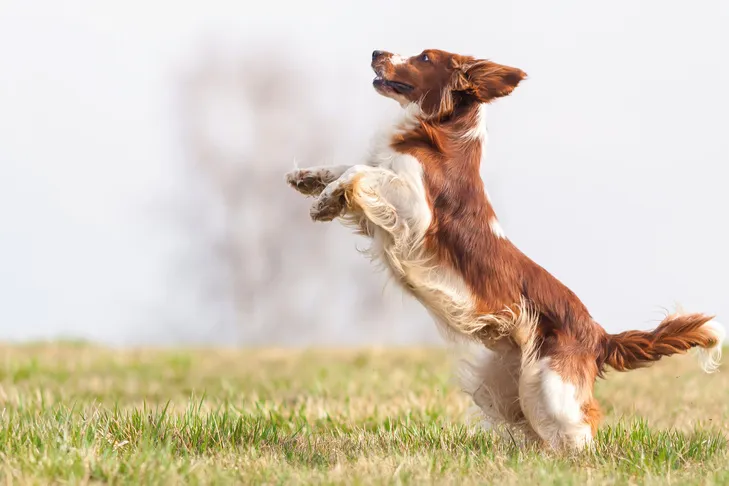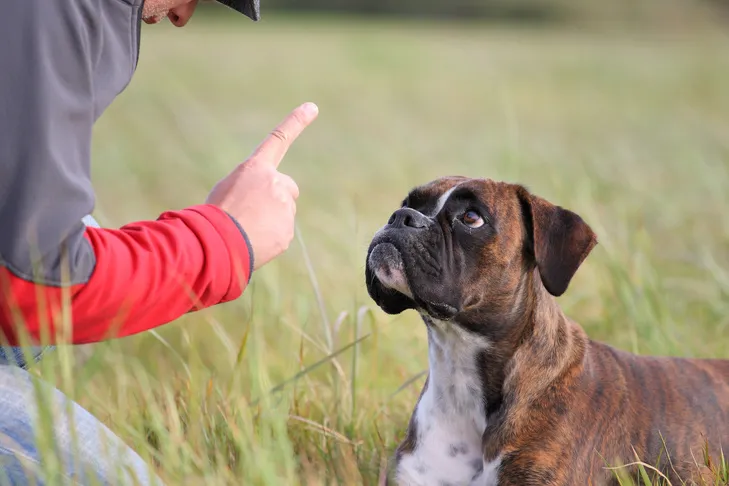Dealing with a dog that loves to jump on people can be a frustrating and potentially hazardous experience. While your furry friend might just be trying to say “hello” face-to-face or grab your attention, their enthusiastic leaps can knock over children or seniors, scratch legs, or leave muddy paw prints on clothes. It’s a common canine behavior problem, but an important one to address for safety and manners. Thankfully, you can teach your dog a more appropriate greeting rule, such as “keep your front paws on the floor,” which is safer and more polite. This guide will provide ten practical tips to help you train your dog to greet humans politely and avoid the unwanted jumping behavior. It’s a journey that requires consistency and patience, but the result will be a well-mannered companion. Learning how to get your puppy to stop pulling on leash is another common training challenge that requires similar dedication.
1. Only Greet Your Dog When All Four Paws are on the Floor
The most effective approach to managing problematic behaviors is to teach your dog an alternative, incompatible action. Dogs learn more quickly when you instruct them on what to do rather than what not to do. For jumping, this means teaching your dog to keep all four paws grounded. They cannot jump and stand simultaneously. Alternatively, you might prefer them to sit or lie down when greeting. The key is to be consistent: only offer attention or a greeting when your dog is adhering to your chosen rule. Avoid giving mixed signals; if jumping is unacceptable in a suit, it should also be unacceptable in jeans.
2. Provide Immediate Attention When Your Dog’s Front Feet are Down
Dogs tend to repeat behaviors that yield desired outcomes, a concept central to positive reinforcement dog training. Therefore, as soon as your dog follows your greeting rule—like having their front feet on the floor—reward them with praise and petting. Your attention serves as a powerful reward, so ensure it’s given immediately when they perform the correct behavior, especially during the learning phase. Delaying your greeting to, say, remove your coat or shoes, might lead your dog to become impatient and resort to jumping to get your notice.
3. Withdraw Attention When Your Dog Jumps
Conversely, the only way to eliminate jumping is to stop reinforcing it. Never reward a behavior you wish to extinguish. If your dog jumps on you, promptly remove what they seek: your attention. This could mean calmly turning your back or walking away. Your dog will quickly realize that jumping achieves the opposite of what they intended. The moment all four paws are back on the floor, turn back and quietly offer praise and petting. This helps your dog understand that their behavior acts as a switch, controlling the presence or absence of your attention.
 Welsh Springer Spaniel jumping up outdoors.
Welsh Springer Spaniel jumping up outdoors.
4. Set Your Dog Up for Success During Greetings
While ignoring jumping and rewarding proper greetings is effective, it can be a trial-and-error process for your dog, which can be frustrating. You can accelerate their learning by making it easier to comply with your greeting rule. If your rule is to sit, then immediately ask them to sit as you enter. If it’s four on the floor, encourage them to remain standing. A fantastic way to prevent jumping is to scatter training treats on the floor. Most dogs can’t resist a free treat, and they can’t jump while sniffing the ground. You need to be quick, but if you offer the food before they even consider jumping, you’re rewarding the “four on the floor” behavior with both attention and treats. Your dog will quickly grasp the rule, and you can gradually phase out the food. Understanding what to do when puppy pulls on leash also involves setting up positive scenarios for your dog.
5. Consistently Reward Proper Greeting Behavior
Your dog will learn appropriate greeting behavior more quickly if their actions immediately influence your attention. Four feet on the floor gains attention, while jumping makes it disappear. This means you must always reward your dog when they follow your greeting rule. Even if you’re annoyed after five minutes of persistent jumping, do not withhold your attention once their feet are on the floor. Inconsistent reinforcement will confuse your dog and hinder their progress.
6. Avoid Grabbing or Pushing Your Dog Away
Remember that your dog jumps for attention. Even a negative physical response, such as grabbing their paws, holding them, or pushing them away, is still a form of attention. This can inadvertently reinforce the jumping behavior, potentially increasing its frequency over time. Worse, for some dogs, physical contact can be misinterpreted as an invitation to engage in roughhouse play, leading them to jump with even more vigor, believing it’s part of the game.
 American Hairless Terrier jumping up on the leg of its owner outdoors.
American Hairless Terrier jumping up on the leg of its owner outdoors.
7. Do Not Use Your Knee to Block Your Dog
You may have heard the advice to raise your knee to block your dog’s chest when they jump. However, as previously discussed, this action can be seen as attention or even a playful wrestling move by some dogs, producing the opposite of the desired effect. More importantly, for most dogs, this physical confrontation can erode the human-canine bond and foster distrust. Your dog is merely trying to say “hello,” and punishing them in response can cause injury or lead to other behavioral issues, such as a reluctance to come when called.
8. Maintain Low-Key Greetings During Training
When your dog is learning, their excitement upon seeing you can be overwhelming, making it difficult to control their natural urge to jump. It requires significant emotional self-control to resist this instinct and adhere to a new greeting rule. You can help your dog by keeping your greetings low-key. Dogs are adept at reading our emotions; if you are overly excited, they will likely mirror that energy. Instead, remain calm and quiet, even when offering praise. As your dog begins to understand, you can gradually increase your enthusiasm until you can match their joy without triggering unwanted jumping. Learning how to get your dog not to pull on leash also benefits from a calm and consistent approach.
9. Prevent Your Dog from Jumping on Guests
Your dog’s behavior isn’t solely reinforced by you. Family members, guests, and even strangers can inadvertently reward jumping if you’re not vigilant. To manage this, employ techniques such as leashing your dog so they cannot approach freely. A more proactive approach is to teach your dog to “go to their place,” such as a mat or bed, or place them in their crate when visitors arrive, ensuring they are not near the door. Using a baby gate to block the front hall can also be an effective management tool.
 Boxer laying down outdoors being trained by a man.
Boxer laying down outdoors being trained by a man.
10. Ask Guests and Strangers to Adhere to Your Greeting Rule
Do not hesitate to clearly communicate your dog’s greeting rules to guests and strangers. While your dog is still in training, ask people to completely ignore your dog unless you indicate it’s appropriate to interact. Try to avoid interactions with unfamiliar people until your dog has mastered polite greetings with friends and family who you know will cooperate. In public, use a “watch me” cue or distract your dog with a hand touch or a toy until the stranger has passed. The consistent application of these rules by everyone your dog encounters is crucial for long-term success.
By consistently applying these ten tips, you can effectively teach your dog to stop jumping and adopt more polite greeting behaviors. It requires patience, consistency, and a clear understanding of your dog’s motivations. Remember, your dog is simply trying to communicate and connect with you, and by providing clear rules and consistent reinforcement, you can guide them toward more appropriate ways of expressing their excitement. For further support or additional dog training questions, consider consulting expert trainers or resources like the AKC GoodDog! Helpline, which offers personalized assistance to help you and your dog thrive.
References:
- AKC GoodDog! Helpline
- AKC Expert Advice articles on dog training and behavior
